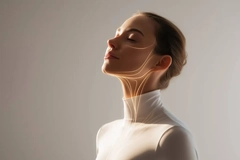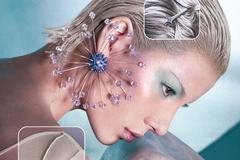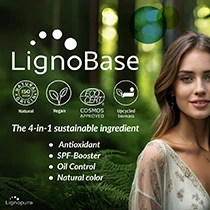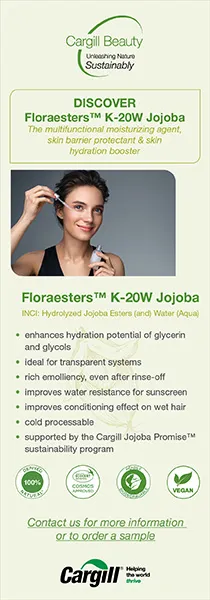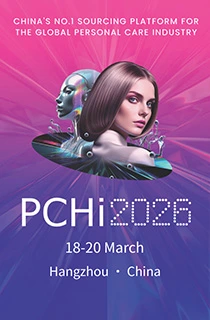Asian beauty trends: Indigenous botanicals, personalization and fusions of heritage and modern traditions

15 Apr 2024 --- Asia’s influence on the global beauty stage is apparent, with skin care and cosmetic trends driven by regional consumers. While familiar themes like personalized beauty are reflected globally, local heritage branding, such as traditional Chinese medicine-inspired skin care formulas, are in vogue.
Personal Care Insights takes a closer look at regional market developments coming into focus.
Over the past five years, the Asian beauty landscape has continuously transformed, Innova Market Insights reveals. “Between October 2022 and September 2023, Lip Cosmetics took center stage, dominating the new product launches,” spotlights the global market researcher.
“Notably, long-lasting formulations claimed the top position with 71% of these launches,” it notes. The market has also witnessed a rising trend in multifunctional makeup items and a surge in sustainable and clean beauty products.”
“Formulas without animal ingredients, emphasizing plant-based alternatives and boasting free-from claims are growing fast. This signals a shift toward eco-conscious and ethical beauty choices in the Asian market.”
The Asian beauty market is currently worth US$244.4 billion and is expected to grow at a compound annual growth rate (CAGR) of 3.54% from 2023 to 2028, according to shopping platform Alibaba.
Within this market, the largest segment is personal care, accounting for almost all of the market’s worth, the online retailer highlights.
“The Asian beauty and personal care market is rapidly embracing e-commerce, with projections indicating that 17.4% of total revenue will be generated through online sales by 2023,” it reveals.
“As businesses engage with this thriving market, understanding the diverse cultural preferences and market dynamics becomes imperative for effective business engagement.”
 Heritage ingredients, such as locally sourced botanicals, are increasingly featured in beauty formulations.Sweeping beauty landscape transformation
Heritage ingredients, such as locally sourced botanicals, are increasingly featured in beauty formulations.Sweeping beauty landscape transformation
B2B wholesale marketplace BeautySourcing identifies that the Asian beauty industry is undergoing a “transformative phase” in 2024, particularly in Japan, Korea, China and Indonesia.
Japanese brands took a hit earlier this year as sales dipped following boycotts led by Chinese consumers in light of the release of Fukushima wastewater. During this period, Shiseido reported weak results as well as its stock plummeted by as much as 14%.
Japan’s beauty trends for 2024 “uphold the essence of minimalism and tradition” while embracing technological advancements, highlights BeautySourcing. “There’s a resurgence of interest in traditional ingredients like rice bran and green tea, melded with cutting-edge formulations.”
“Consumers seek simplicity, focusing on skin care rituals that enhance natural beauty, with a growing preference for sustainable and eco-friendly products.”
Meanwhile, Korean beauty continues to captivate global audiences with its innovation and trendsetting prowess. In 2024, K-beauty trends evolve toward multifunctional products catering to the fast-paced lifestyles of consumers.
“Emphasis lies on skin care as a form of self-care, with a surge in demand for hybrid products combining skin care and makeup,” highlights BeautySourcing. “Personalization and sustainability also remain key focal points in the K-beauty sphere.”
Skin-healing indigenous botanicals
In China, the beauty market continues its rapid expansion, infusing modern skin care formulas with traditional Chinese medicine principles. “In 2024, C-beauty emphasizes herbal ingredients and holistic approaches, appealing to consumers seeking authenticity and efficacy,” highlights BeautySourcing.
“Technology plays a pivotal role, with AI-driven skin care solutions gaining traction. The market also witnesses a rise in homegrown brands embracing global standards of quality and innovation.”
Indonesia’s beauty scene in 2024 centers around authentic, natural beauty rituals deeply rooted in the country’s diverse cultural heritage, notes BeautySourcing.
“Consumers lean toward clean, green beauty, fostering a surge in demand for ethically sourced, sustainable products. Local brands emphasizing authenticity and community engagement gain momentum,” it reveals.
“Indigenous ingredients like turmeric, jamu and tropical botanicals take the spotlight.”
Jamu is a traditional Indonesian practice rooted in good health and well-being, which translates from Javanese words meaning “well wishes” and “health.” It comprises herbal concoctions, which typically feature ingredients like turmeric and tamarind, which are a daily ritual for many Indonesians.
Aligning with the “beauty from within” trend, Jamu encompasses both drinkable tonics and topical treatments, making it a holistic approach to health seen in everyday life and even in the pampering traditions of Balinese spas.
 Gotu kola extract is one example of a traditional Chinese medicine herb featured in heritage-inspired beauty formula applications.Fusion beauty intersects cultures
Gotu kola extract is one example of a traditional Chinese medicine herb featured in heritage-inspired beauty formula applications.Fusion beauty intersects cultures
BeautySourcing identifies that the concept of “fusion beauty” is rapidly “transcending borders,” blending Eastern and Western philosophies to create innovative products.
In 2024, this Asian trend gains momentum, introducing a fusion of ancient rituals with modern technology.
Givaudan Active Beauty recently evaluated the efficacy of Centella asiatica extract (gotu kola) in removing stretch marks and deciphered its mechanism of action. The supplier claims the traditional Chinese medicine staple can stimulate cell growth and reduce extracellular matrix degradation, which are important factors in skin repair.
In terms of branding, the concept of beauty in Asia has undergone a transformative shift toward “greater inclusivity,” underscores BeautySourcing.
“No longer confined to conventional notions predominantly associated with femininity, today’s understanding of beauty extends beyond gender boundaries to include men as well.
According to a survey conducted by the health advocacy group Environmental Working Group, there has been a nearly twofold increase in the use of personal care products by men since their last study in 2004.
On average, men now incorporate 11 personal care products into their daily routine, compared to six in 2004, reveals the data. It indicates that younger men are more inclined to use personal care products, suggesting that as these men age, the market will continue to grow, becoming “even more significant and impossible to overlook.”
As one example of this trend, Dior states that the updated formulation of its Capture Totale serum has been designed without gender distinction, catering to both men and women and incorporates a universal testing platform.
Chanel launched “Boy” in 2018, its own men’s makeup franchise, to target Asia. In addition, many brands specializing in men’s cosmetics are growing in prominence, such as Horace in the European market or Bulldog skin care for anti-ageing issues.
By Benjamin Ferrer


